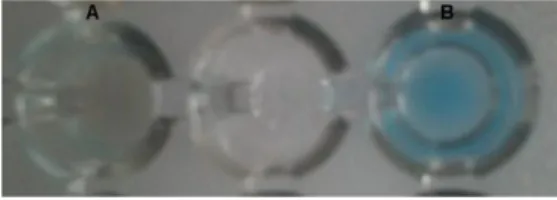NANOTECHITALY 2013
Preparation and characterization of silica nanoparticles conjugated with a protein that
specifically recognizes human cancer cells.
Lucia Cenci1, Michele Bovi1, Laura Destefanis1, Nicolò Mazzucco2, Massimiliano Perduca1 , Hugo L. Monaco1 and Pietro Riello2
(1) Biocrystallography Laboratory, Department of Biotechnology, University of Verona, Verona, Italy. (2) Department of Molecular Sciences and Nanosystems, University of Venezia, Venezia, Italy.
BEL β-trefoil is a novel lectin purified from the fruiting bodies of king bolete mushrooms [1]. The lectin has potent anti-proliferative effects on human epithelial cancer cells which confers to it an interesting therapeutic potential as an antineoplastic agent. All the three potential binding sites present in the β-trefoil fold are able to selectively bind the T-antigen disaccharide (Thomsen Friedenreich antigen;Galβ1-3GalNAc) witch is specifically exposed in human carcinomas and other neoplastic tissues. Therefore BEL β-trefoil linked to nanoparticles could enable them to discriminate between healthy and neoplastic cells targeting nanoparticles specifically towards cancer cells. BEL β-trefoil is also available recombinantly expressed in E.coli fused with the GFP (Green Fluorescence Protein) that can be useful to immediately detect the presence and activity of the protein after the coupling reaction to nanoparticles.
RESULTS AND DISCUSSION
Nanoparticle preparation and characterization The lectin was covalently linked to silica nanoparticles with mean diameter of 150 nm obtained by the Stober method [2] (Fig 1). The surface of the silica particles was modified in order to have on it aldehyde functional groups to allow covalent protein binding. The nanoparticles were then re-suspended in a carbonate buffer medium, pH=7.9 and bioconjugated with the recombinant protein or with the protein purified from its natural source, via Schiff base formation and reduction with sodium cyanoborohydride [3]. The particle suspensions were then washed and centrifuged several times with buffer prior to re-suspending them for further analysis. Particle size, zeta-potential and the polydispersity index (PDI) were analyzed and showed a unimodal particle size distribution with a mean diameter of 154 nm, a charge of -18 mV and a PDI of 0.4
Figure 1 Silica nanoparticles
The presence of the protein bound to the nanoparticle surface was assessed by mixing 10 μl of NPs re-suspended at a concentration of 80 mg/ml in Phosphate buffer (PBS) and 90 μl of Coomassie Brilliant Blue (Fig2B). Figure 2A (left hand side) is the control experiment carried out with NPs not coupled to the protein.
Figure 2 Coomassie Brilliant Blue test
The concentration of the protein on the NP surface was determined via spectrofluorimetric experiments. The coupling efficiency was 8.72 nanomoles of protein per 1 mg of nanoparticles. The experiment was conducted exciting the protein tryptophanes at 280 nm and reading the fluorescence emission at 350 nm. In order to correct for the possible intrinsic fluorescence coming from the matrix, the signal of the uncoupled NPs was subtracted from that of the reading.
NANOTECHITALY 2013
The activity of the protein was checked using a hemagglutination test: 20 mg of BEL conjugated NPs (Fig. 3B) and SiO2 nanoparticles (Fig. 3A) were
re-suspended in 250 μl PBS, 50 μl of PBS were mixed with 50 μl of the nanoparticle suspension in the first well and six serial dilutions were prepared. The last well was used as a negative control without NPs. 50 μl of red blood cells were added to all the samples. After 30-60 minutes incubation the cell agglutination becomes evident.
Figure 3 Hemagglutination test.
References
[1] Bovi M, Cenci L, Perduca M, Capaldi S, Carrizo ME, Civiero L, Chiarelli LR, Galliano M, Monaco HL. “BEL β-trefoil: a novel lectin with antineoplastic properties in king bolete (Boletus edulis) mushrooms”. Glycobiology 23(5):578-92, 2013.
[2] Stöber W, Fink A, Bohn E. “Controlled growth of monodisperse silica spheres in the micron size range”. J. Colloid Interface Sci. 26: 62–69, 1968.
[3] Madera M, Mechref,Y, Klouckova I, Novotny MV. “High-sensitivity profiling of glycoproteins from human blood serum through multiple-lectin affinity chromatography and liquid chromatography/tandem mass spectrometry”. Journal of chromatography. B 845(1): 121–37, 2007.
Contacts
Michele Bovi, PhD
Biocrystallography Laboratory
Department of Biotechnology - University of Verona. Strada Le Grazie, 15 - Cà Vignal 1
37134 Verona ITALY
Phone: +39 045 802.7959 e-mail: [email protected]

